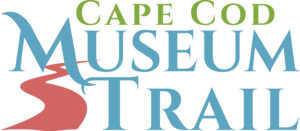After an 18-month reconstruction that cost $2.5 million, the Cahoon Museum of American Art will boast twice the exhibition space it previously had for its extensive collection – and be open to the public in April.
In the meantime, you can enjoy a significant sampling of its art at the museum’s temporary Maspee Commons location.
The renovation was described this way in a recent Cape Cod Times article:
“While the exterior of the new building facade looks early-American, it is anything but on the inside. The new addition will feature a main, high-ceilinged gallery for rotating exhibitions, classroom and lecture space with multimedia equipment, a gift shop and state-of-the-art secure and climate controlled storage area for the museum’s permanent collection. The museum will also be fully accessible when it reopens with an elevator that can take visitors from a ground-level courtyard and garden area to a second floor gallery in the original building.
The museum’s permanent collection will continue to be exhibited in the main building, and a space will be reverted to resemble the Cahoon’s original studio, where celebrities and well-known patrons of the arts, including Jacqueline Kennedy Onassis, were known to visit on a regular basis. Late 18th-century stenciling work that adorns the walls and stairway in the original building will also be restored.”
Located in the former home of longtime Cape residents Ralph and Martha Cahoon, the museum houses a variety of American art works. The Cahoons, who lived in the home until 1984, used it as both a studio and living space. After Ralph’s death, Martha eventually sold it to Rosemary and Keith Rapp whose expansive collection of American art inspired them to turn the humble abode into a museum.
Today, the museum holds more than 300 works of American art, many of which are those created by Ralph and Martha.
Built in 1780 by Ebenezer Crocker, the Cahoon home is one of a rich background. Crocker was involved with the American Revolution, but also built many homes. At one time, the house was used as a stage coach stop between Hyannis and Sandwich, and in the 1950s, it became a tea shop during a time when it was a popular activity for travelers to stop in Cape Cod for tea when journey from Boston.
A Cahoon history
Just like their home, the Cahoons have a unique and intriguing history behind them, one that didn’t always involve works of art that would one day hang in a museum. They were originally both folk artists who started out as furniture painters. One day, a customer came into their shop and asked if they did any other styles of painting in addition to their work with furniture.
From there, the couples’ talent for traditional painting came to fruition. Interestingly enough, Ralph had a knack for painting mermaids; a subject he knew was popular and would sell in greater quantity. “He liked the comical end of them,” explained Waterhouse. “In his paintings, the mermaids became people.”
One such painting is that of “Megansett Tea Room.” A girl is seen peeking her head inside a tearoom, only to find that the tea drinkers are actually mermaids.
Ralph’s sense of humor in mermaids is really brought to life in “Bone Appetite,” which depicts Julia Childs dressed as a water-born creature.
In contrast to Ralph’s wild works, Martha showcased a much calmer and more reserved style in her art. Typically creating still lifes and lanscapes, Martha was famous for her Garden of Eden scenes.
But while they each had their own unique styles, one element acted as a common thread throughout both of their works: Their connection to Cape Cod.
Their works are real Cape Cod with Cape Cod landscapes. There are recognizable objects in the paintings,” the director said, adding that many works in the permanent collection display Cape related scenes.
Along with the Cahoons’ paintings, the museum’s permanent collection is also home to a strong compilation, including many ships and the works of James Buttersworth, a prominent maritime artist in the nineteenth century.
Visitors to the museum can even read Martha’s diary, which conveys her thoughts about her artwork, garden, and every day life.
Overall, the Cahoon Museum of American Art embodies a uniqueness that can’t be found anywhere else. Its eclectic nature and connection to Cape Cod are embodied just as passionately in the works themselves as they are in the artists who created them.

Leave A Comment